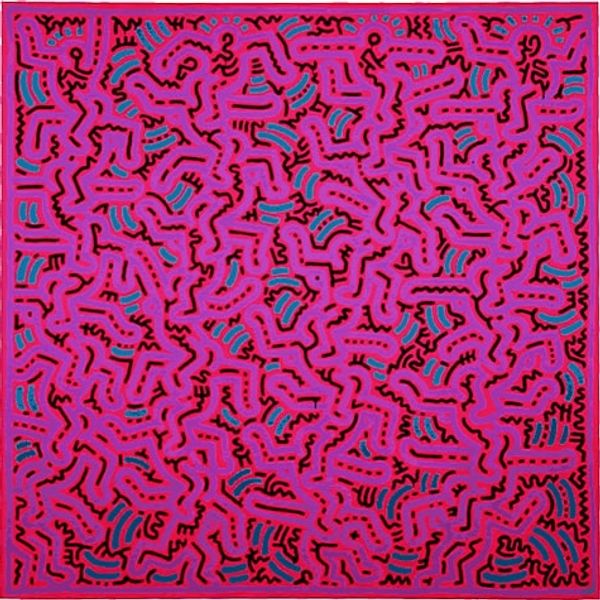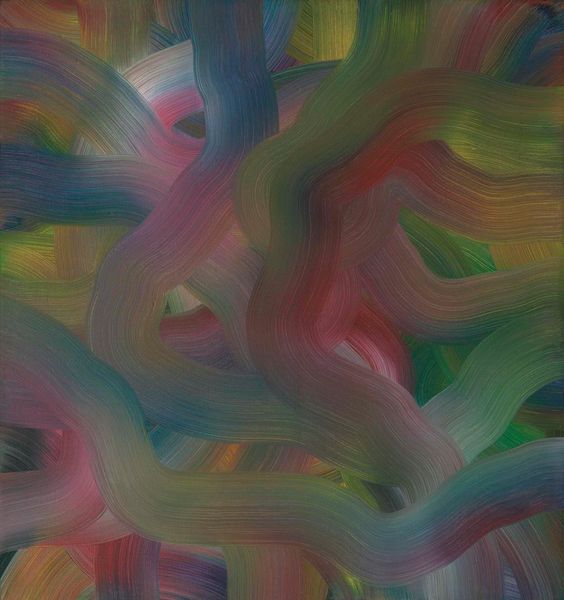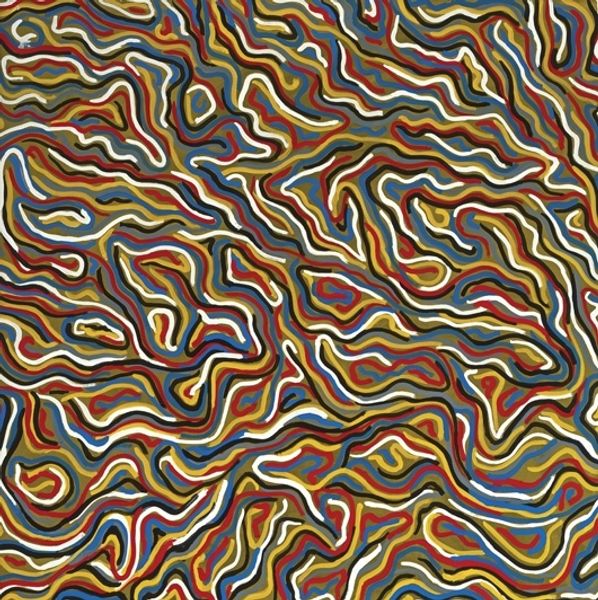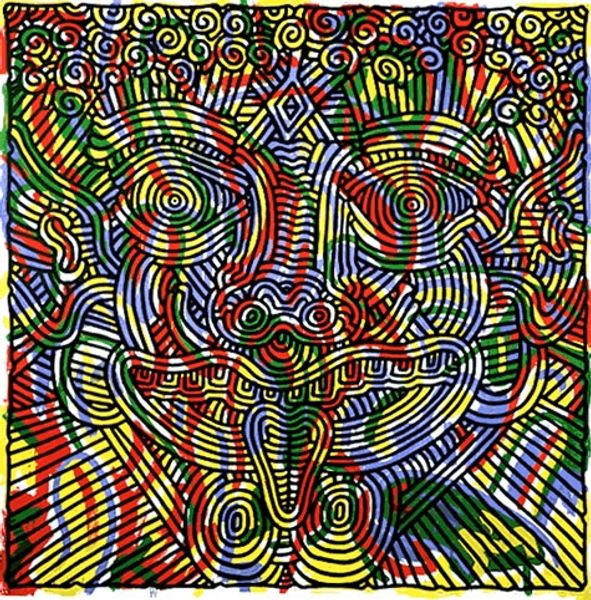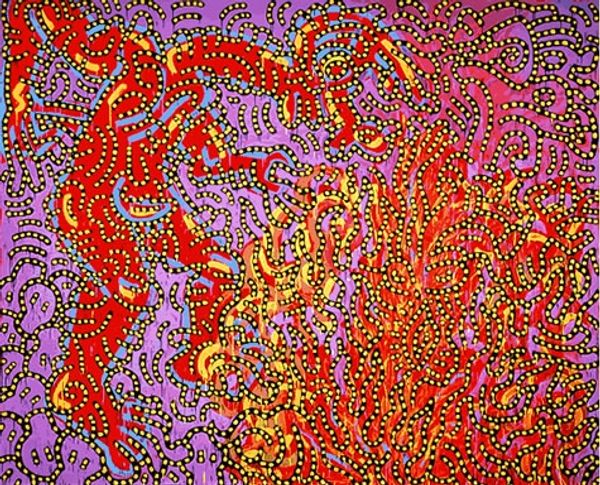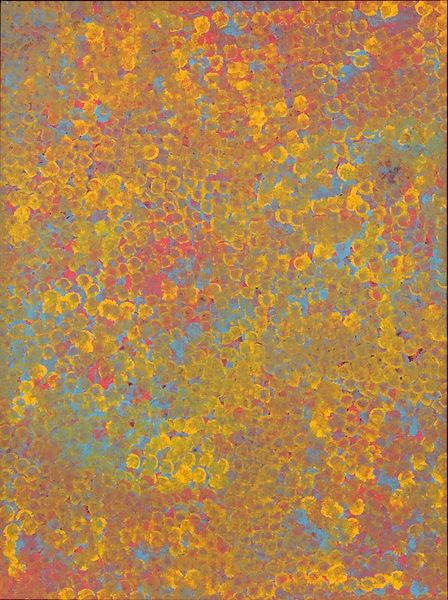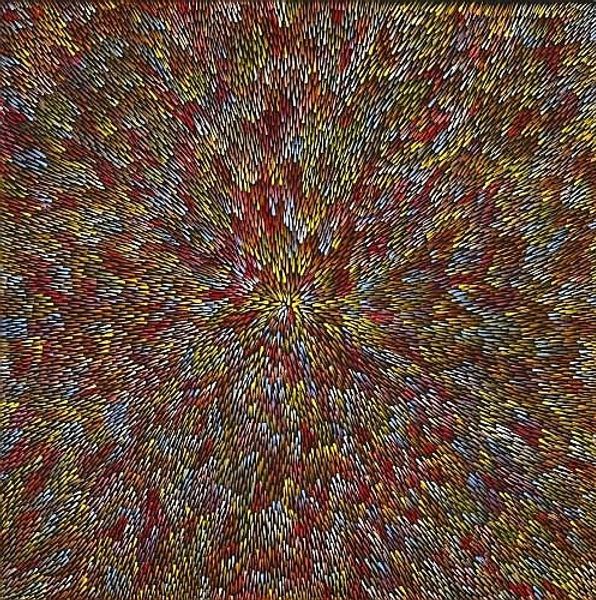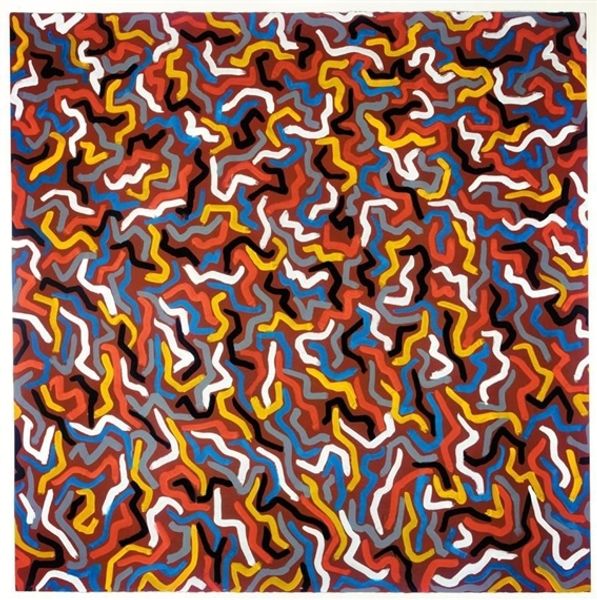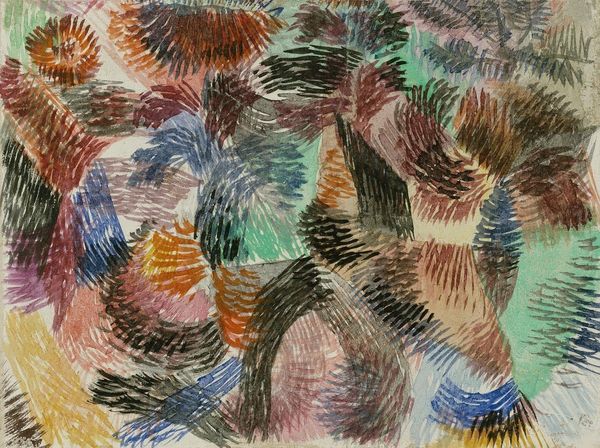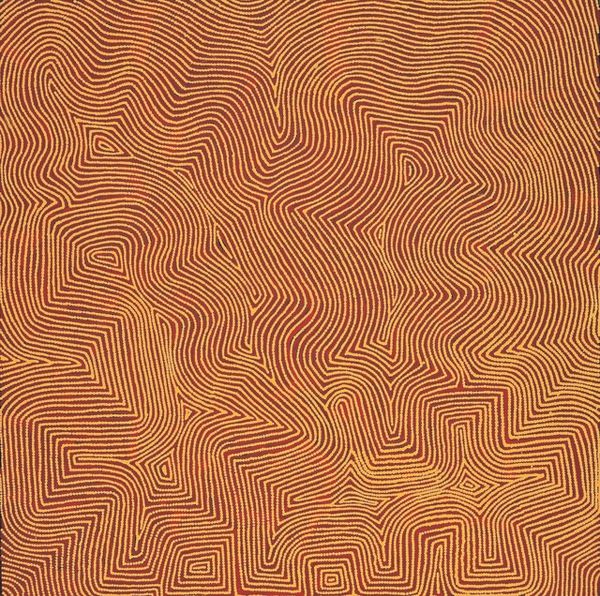
Dimensions: support: 2438 x 2438 mm
Copyright: © Bernard Cohen | CC-BY-NC-ND 4.0 DEED, Photo: Tate
Curator: Here we have Bernard Cohen’s large-scale painting, “In That Moment,” currently residing in the Tate Collections. Editor: Wow, it feels like looking into my own tangled thoughts sometimes! So many looping lines… it's almost overwhelming but strangely calming. Curator: Cohen's work often explores process and the act of painting itself. We might consider how this piece reflects broader trends in abstraction that resist fixed meanings. Editor: I feel like I could get lost in there. Each color and line seems to want to tell a different story, but together they create this symphony of chaos. Beautiful chaos, though. Curator: Precisely. It invites viewers to engage with the painting on a very personal level, navigating their own interpretations through the artist's mark-making. Editor: It makes me think about how even the most complex things, like feelings or memories, are made up of simple, interconnected parts. Curator: Indeed. And perhaps, like our memories, these lines are not always logically connected, yet they form a cohesive whole. Editor: I'm glad I got to wander through this colorful maze today. It's like a reminder to embrace the messiness of life.
Comments
Join the conversation
Join millions of artists and users on Artera today and experience the ultimate creative platform.
tate 6 months ago
⋮
The image here is a single line which Cohen continued till the whole surface was covered. Changing the colours at random intervals, he painted it one stretch at a time, first by brush, in oil paint, and then by overspraying with an emulsion of oil and egg. This yielded a line with two distinct textures, each immaculate. As with 'Fall', also in this display, the title of this work refers to the French writer Albert Camus. Cohen admired Camus's belief in stoical persistence combined with acknowledgement of life's absurdity. In his philosophical essay 'The Myth of Sisyphus' (1942) Camus relates how 'The Gods had condemned Sisyphus to ceaselessly rolling a rock to the top of a mountain, whence the stone would roll back of its own weight'. Adapting a phrase from Camus's essay, this picture's title refers to the moment when the unbroken line returns to the bottom edge of the canvas, where it began. Gallery label, August 2004

